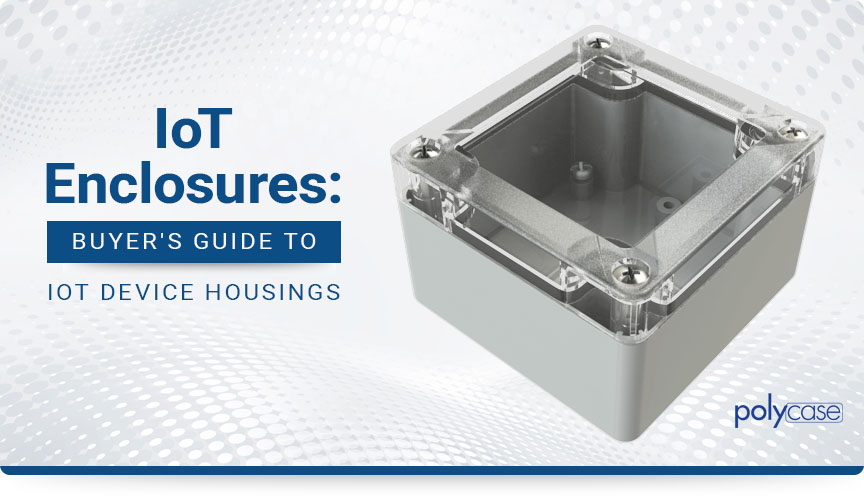January 16, 2020
- Url

 IoT devices now fill an incredible variety of niches. You’ll find all kinds of functions within the IoT device sphere, including:
IoT devices now fill an incredible variety of niches. You’ll find all kinds of functions within the IoT device sphere, including:
 NEMA 4X enclosures, NEMA 12 enclosures and IP67 enclosures are among our most popular ratings for IoT devices. Check out our easy-to-use NEMA ratings guide and IP ratings guide for more information on these important rating systems and how they can help you find the enclosure you need.
NEMA 4X enclosures, NEMA 12 enclosures and IP67 enclosures are among our most popular ratings for IoT devices. Check out our easy-to-use NEMA ratings guide and IP ratings guide for more information on these important rating systems and how they can help you find the enclosure you need.  On the other hand, aluminum is often a sub-optimal choice for devices that use internal antennas, as many IoT devices do (particularly those designed for the consumer market). The material’s natural shielding blocks the Wi-Fi signal and makes it hard to transmit effectively. Stainless steel and carbon steel enclosures are also known to provide a level of RFI/EMI shielding, with similar accompanying pros and cons. If your device needs to transmit RF signals through an internal antenna, Polycase offers enclosures in a variety of materials that will not interfere with signal transmission. Our polycarbonate enclosures and ABS plastic enclosures offer rugged performance with no compromise in signal clarity.
On the other hand, aluminum is often a sub-optimal choice for devices that use internal antennas, as many IoT devices do (particularly those designed for the consumer market). The material’s natural shielding blocks the Wi-Fi signal and makes it hard to transmit effectively. Stainless steel and carbon steel enclosures are also known to provide a level of RFI/EMI shielding, with similar accompanying pros and cons. If your device needs to transmit RF signals through an internal antenna, Polycase offers enclosures in a variety of materials that will not interfere with signal transmission. Our polycarbonate enclosures and ABS plastic enclosures offer rugged performance with no compromise in signal clarity.  Our IoT customers especially love these product series:
Our IoT customers especially love these product series:
Polycase EX-53
We can create custom cutouts using state-of-the-art CNC machining tools on any polycarbonate, ABS or aluminum enclosure. All we need is an engineering drawing or CAD rendering, and our advanced CNC systems will do the rest, with ultra-fine tolerances of +/-0.005”. We offer any size or shape cutout on any surface of your IoT enclosure. IoT devices also often require custom printing to ensure that any user can easily understand the device’s functions and features. Polycase makes it easy to give any enclosure the exact visual look that it needs, with full-color printing that’s applied directly to the device, rather than labels that are prone to fading, peeling and crooked application. The Internet of Things is among the most exciting new frontiers of the global tech industry, and selecting a great IoT device enclosure from Polycase will help ensure that your device is ready to perform on the global stage. For more information, be sure to check out our full selection of electronics enclosures, or just contact us online or by phone at 1-800-248-1233 to speak to our friendly enclosure experts.